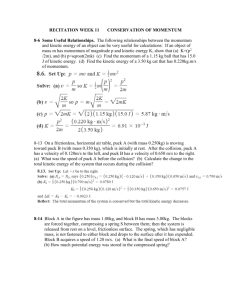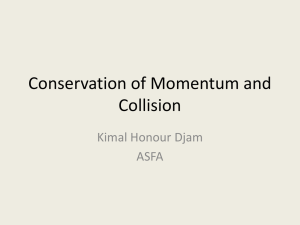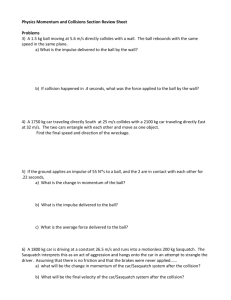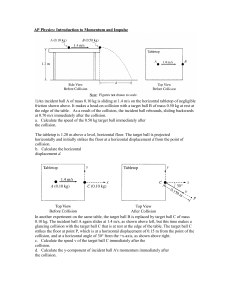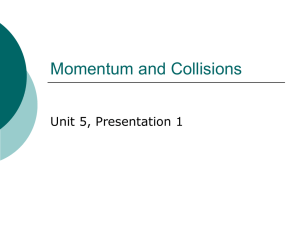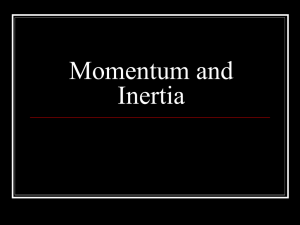Momentum and Impulse Practice Problems
advertisement
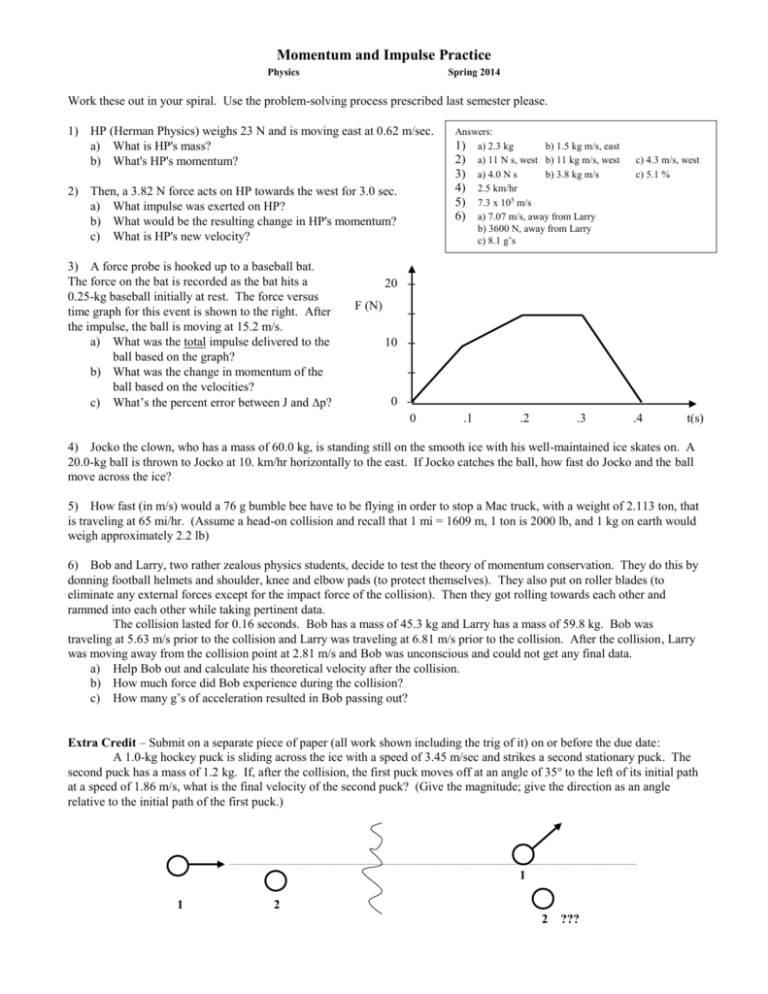
Momentum and Impulse Practice Physics Spring 2014 Work these out in your spiral. Use the problem-solving process prescribed last semester please. 1) HP (Herman Physics) weighs 23 N and is moving east at 0.62 m/sec. a) What is HP's mass? b) What's HP's momentum? 2) Then, a 3.82 N force acts on HP towards the west for 3.0 sec. a) What impulse was exerted on HP? b) What would be the resulting change in HP's momentum? c) What is HP's new velocity? 3) A force probe is hooked up to a baseball bat. The force on the bat is recorded as the bat hits a 0.25-kg baseball initially at rest. The force versus time graph for this event is shown to the right. After the impulse, the ball is moving at 15.2 m/s. a) What was the total impulse delivered to the ball based on the graph? b) What was the change in momentum of the ball based on the velocities? c) What’s the percent error between J and p? Answers: 1) a) 2.3 kg b) 1.5 kg m/s, east 2) a) 11 N s, west b) 11 kg m/s, west 3) a) 4.0 N s b) 3.8 kg m/s 4) 2.5 km/hr 5) 7.3 x 105 m/s 6) a) 7.07 m/s, away from Larry b) 3600 N, away from Larry c) 8.1 g’s c) 4.3 m/s, west c) 5.1 % 20 -F (N) -10 --0 -0 .1 .2 .3 .4 t(s) 4) Jocko the clown, who has a mass of 60.0 kg, is standing still on the smooth ice with his well-maintained ice skates on. A 20.0-kg ball is thrown to Jocko at 10. km/hr horizontally to the east. If Jocko catches the ball, how fast do Jocko and the ball move across the ice? 5) How fast (in m/s) would a 76 g bumble bee have to be flying in order to stop a Mac truck, with a weight of 2.113 ton, that is traveling at 65 mi/hr. (Assume a head-on collision and recall that 1 mi = 1609 m, 1 ton is 2000 lb, and 1 kg on earth would weigh approximately 2.2 lb) 6) Bob and Larry, two rather zealous physics students, decide to test the theory of momentum conservation. They do this by donning football helmets and shoulder, knee and elbow pads (to protect themselves). They also put on roller blades (to eliminate any external forces except for the impact force of the collision). Then they got rolling towards each other and rammed into each other while taking pertinent data. The collision lasted for 0.16 seconds. Bob has a mass of 45.3 kg and Larry has a mass of 59.8 kg. Bob was traveling at 5.63 m/s prior to the collision and Larry was traveling at 6.81 m/s prior to the collision. After the collision, Larry was moving away from the collision point at 2.81 m/s and Bob was unconscious and could not get any final data. a) Help Bob out and calculate his theoretical velocity after the collision. b) How much force did Bob experience during the collision? c) How many g’s of acceleration resulted in Bob passing out? Extra Credit – Submit on a separate piece of paper (all work shown including the trig of it) on or before the due date: A 1.0-kg hockey puck is sliding across the ice with a speed of 3.45 m/sec and strikes a second stationary puck. The second puck has a mass of 1.2 kg. If, after the collision, the first puck moves off at an angle of 35 o to the left of its initial path at a speed of 1.86 m/s, what is the final velocity of the second puck? (Give the magnitude; give the direction as an angle relative to the initial path of the first puck.) 1 1 2 2 ???
